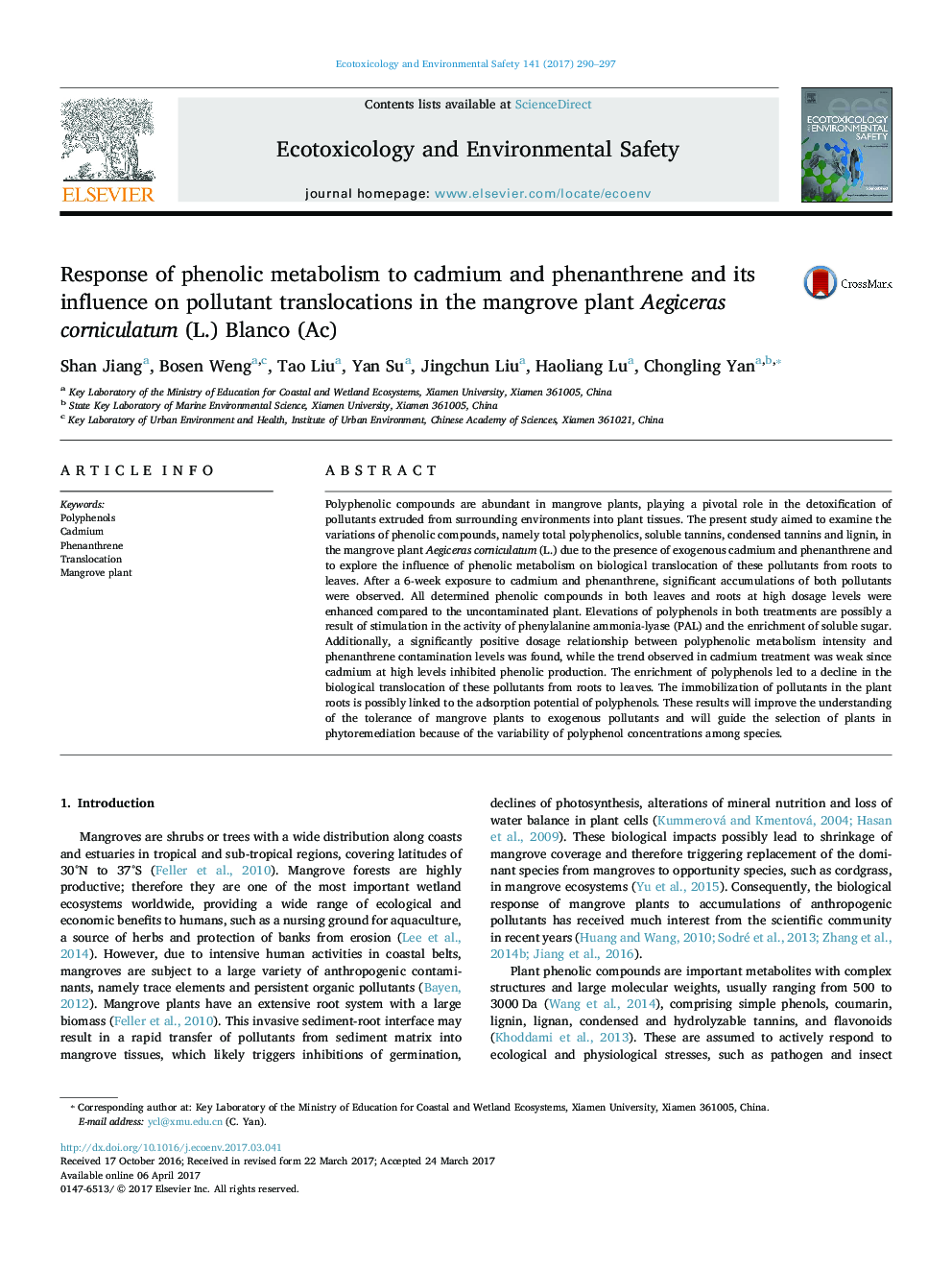| کد مقاله | کد نشریه | سال انتشار | مقاله انگلیسی | نسخه تمام متن |
|---|---|---|---|---|
| 5747910 | 1618923 | 2017 | 8 صفحه PDF | دانلود رایگان |

- Response of mangrove phenolic metabolism to cadmium and phenanthrene was studied.
- Contents of total phenols, tannins and lignin in leaves and roots were increased.
- Accumulation of phenolic compounds decreased the pollutant translocation factor.
Polyphenolic compounds are abundant in mangrove plants, playing a pivotal role in the detoxification of pollutants extruded from surrounding environments into plant tissues. The present study aimed to examine the variations of phenolic compounds, namely total polyphenolics, soluble tannins, condensed tannins and lignin, in the mangrove plant Aegiceras corniculatum (L.) due to the presence of exogenous cadmium and phenanthrene and to explore the influence of phenolic metabolism on biological translocation of these pollutants from roots to leaves. After a 6-week exposure to cadmium and phenanthrene, significant accumulations of both pollutants were observed. All determined phenolic compounds in both leaves and roots at high dosage levels were enhanced compared to the uncontaminated plant. Elevations of polyphenols in both treatments are possibly a result of stimulation in the activity of phenylalanine ammonia-lyase (PAL) and the enrichment of soluble sugar. Additionally, a significantly positive dosage relationship between polyphenolic metabolism intensity and phenanthrene contamination levels was found, while the trend observed in cadmium treatment was weak since cadmium at high levels inhibited phenolic production. The enrichment of polyphenols led to a decline in the biological translocation of these pollutants from roots to leaves. The immobilization of pollutants in the plant roots is possibly linked to the adsorption potential of polyphenols. These results will improve the understanding of the tolerance of mangrove plants to exogenous pollutants and will guide the selection of plants in phytoremediation because of the variability of polyphenol concentrations among species.
Journal: Ecotoxicology and Environmental Safety - Volume 141, July 2017, Pages 290-297